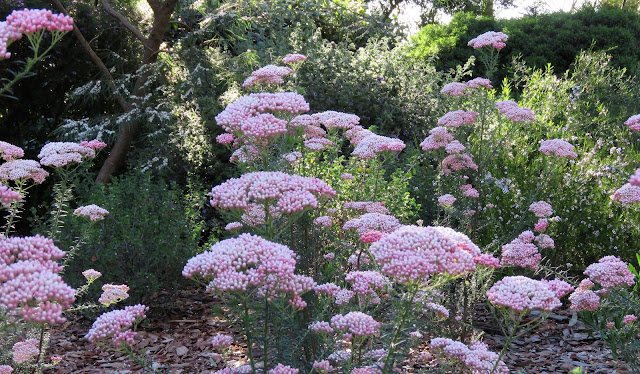Blushing rice flower not for boiling or baking
This is what is often called Rice Flower, a shrubby daisy from New South Wales and southern Queensland, and relatively common in cultivation. Its flowers resemble enlarged grains of rice, and never open fully.
Rice Flower is a species of Ozothamnus, a genus named by Robert Brown in 1817. Fifty years later, George Bentham reduced it to a subgroup (originally called a 'section') within Helichrysum, and then in 1991, it was reinstated again as a genus.
The name 'ozothamnus' means smelly shrub, and the leaves of most species do have some fragrance. This species, Ozothamnus diosmifolius, has a not-unpleasant odour but I can't begin to describe it.The cultivar illustrated here is called 'Royal Flush', on account of that lovely pink blush. It grows happily in a garden flanking our eucalypt walk in the Australian Garden at Cranbourne. Once settled in, it needs little additional water.
There are plenty of other pretty cultivars, with either white or pink bracts around those rice-like flowerheads. Even on a single plant you get different shades of colouring, with this intensely pink flower cluster appearing late in the season when most other flowers were finished and in fruit.
As pretty as it is, I was curious about how it might attract pollinators given the flowerhead structure seems to make it hard for any insect to find the flowers themselves. Apparently, it produces an 'aromatic nectar', but in small quantities. It seems a variety of small beetles (and probably other insects) visit and pollinate these tiny flowers.
In any case, it produces abundant seed and unless you are keen to maintain a particular colour variant (when you should take cuttings), it's easy to propagate that way.





Comments